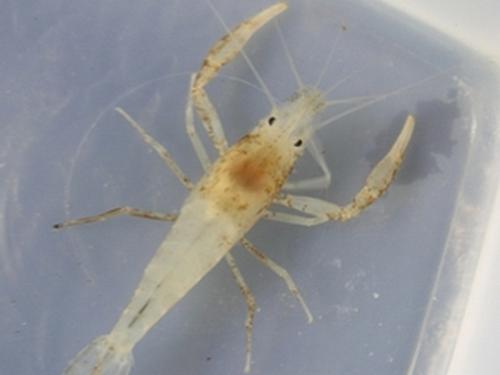Cahyo Rahmadi
The project’s aims are to explore and study the cave fauna focusing on cave arthropods and bats, to build a baseline data and to promote the importance of cave fauna for karst conservation.

Macrobrachium.
Indonesia has an extensive karst area ranging from Sumatra to Papua. Unfortunately, knowledge of its biology is still poor and uneven. Javanese caves have an extensive development in some karst areas but they lack biological surveys, especially on faunal diversity. Caves are home to a number of species of arthropods and bats that are now critically need to be surveyed to assist in conservation steps. The numbers of obligate cave species in Java are very low (5 species) compare to Maros Karst (Sulawesi) (> 15 species). The last cave obligate species from Java, Stenasellus javanicus, was described in 2006. The species freshwater isopod is found in small puddles in small caves near limestone quarries. The status of the population remains unknown. Also, several species are waiting to be described and are believed to be obligate cave fauna new to science. Cave faunas, such as bats and cave obligate arthropods, are fragile and do not tolerate disturbance and habitat changes. A detailed survey on cave fauna is very useful in providing the preliminary data both taxonomically and ecologically.
Karsts in Java are densely populated and threatened by limestone quarries, habitat conversion, and other human activities. Since there are no karst areas designated as conservation areas, it is very difficult to manage the karst ecosystem to ensure the conservation of cave habitats and their associated faunas. Since December 6th, 2004, two karst areas in Java, Gunung Sewu and Gombong, were declared to be EKO KARST Region by the President of the Republic of Indonesia. The extensive underground rivers in both areas are believed to be a home for the evolution of certain fauna, which are restricted in some ecological requirements and are endemic to limited karst areas.